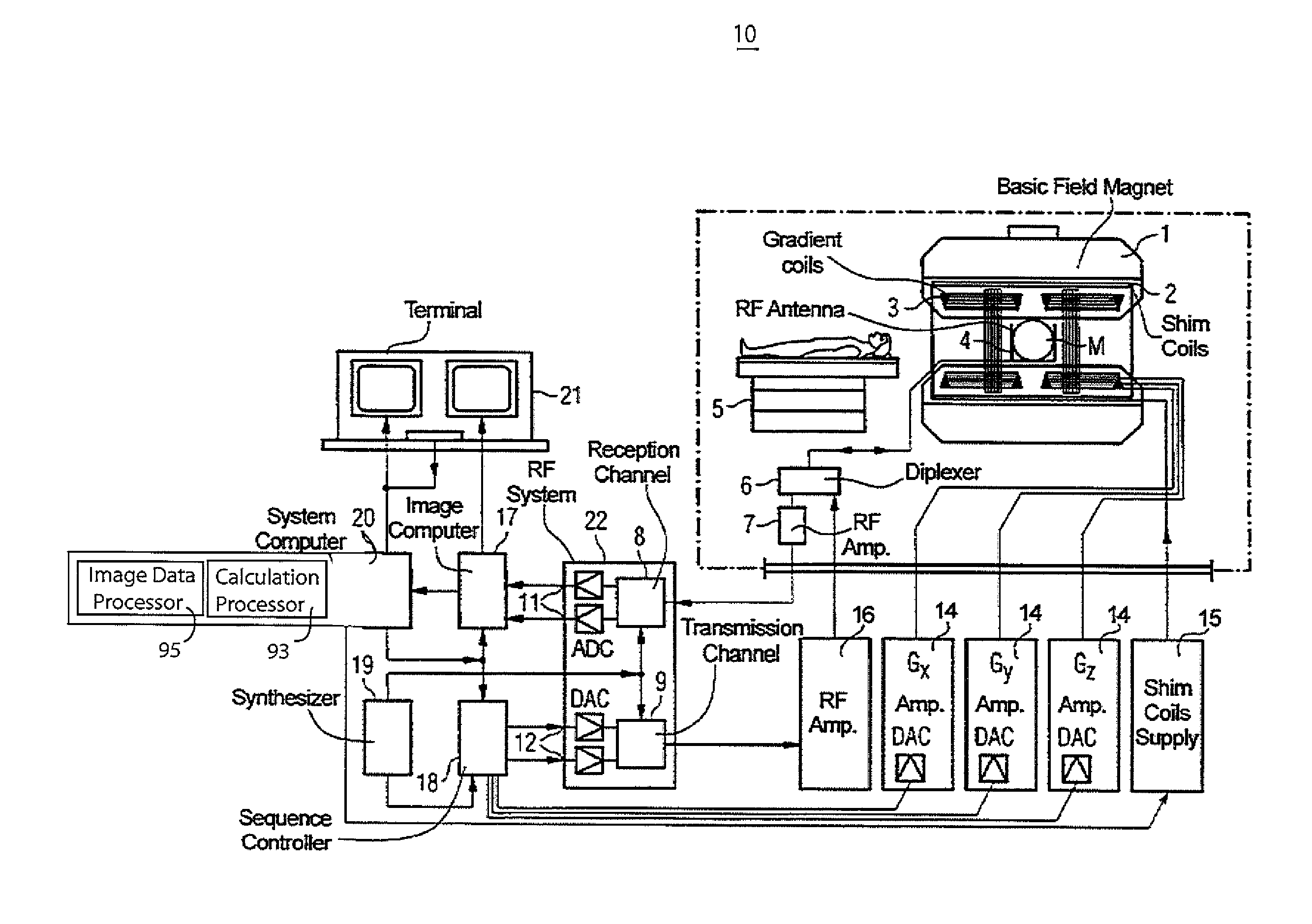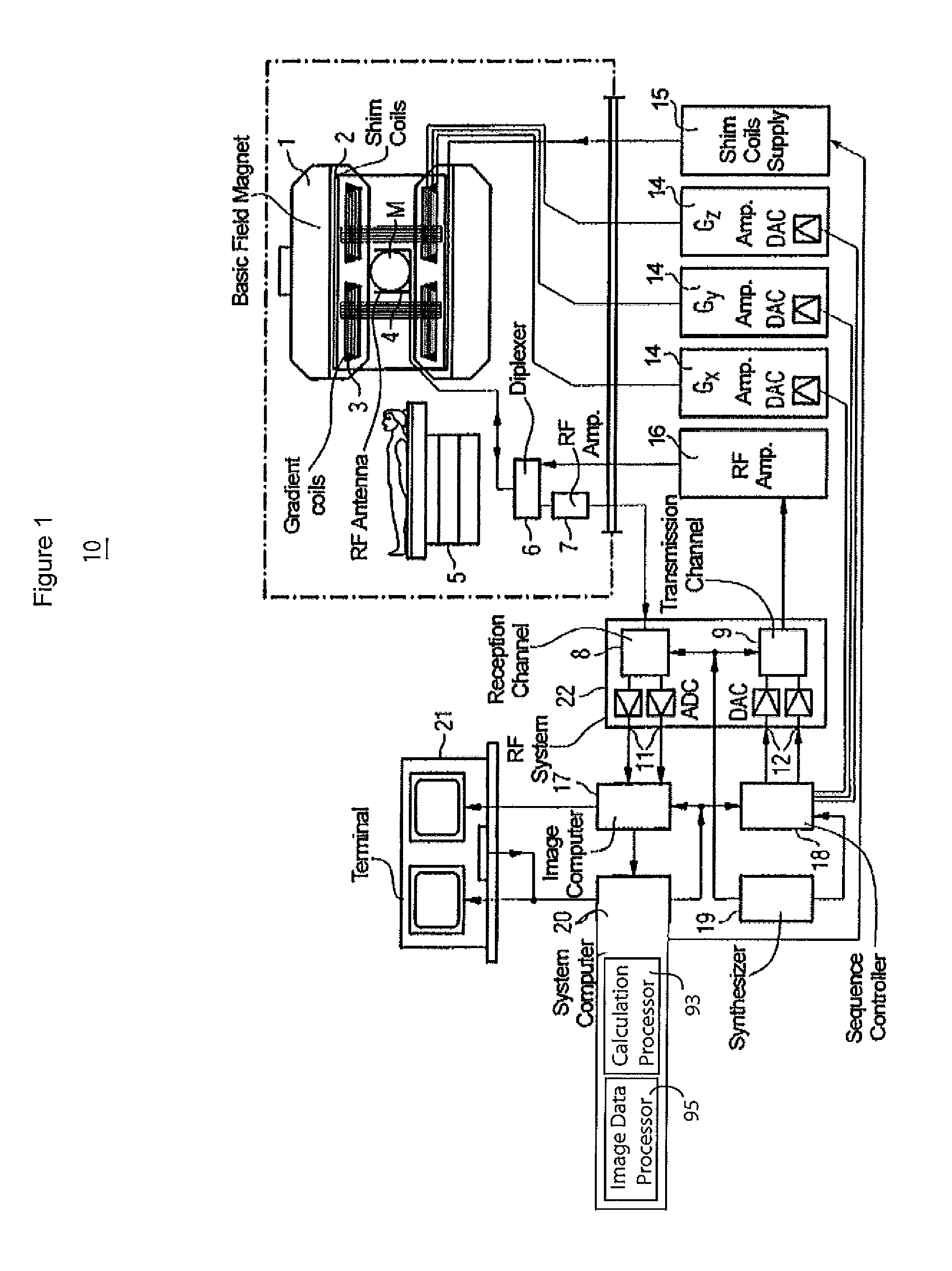System for Blood Flow Velocity Determination using MR Imaging
a technology of flow velocity and imaging, applied in the field of system for blood flow velocity determination in mr imaging, can solve the problems of difficult manual alignment of these axes, high cost, and often underestimated peak velocity of flow jets by methods, so as to improve the speed and precision of mr data acquisition workflow, the effect of improving the accuracy of peak velocity measurements
- Summary
- Abstract
- Description
- Claims
- Application Information
AI Technical Summary
Benefits of technology
Problems solved by technology
Method used
Image
Examples
Embodiment Construction
[0010]A system provides automatic accurate alignment of a velocity-encoding axis of a real-time single-dimensional phase-contrast sequence with a principle axis of a blood flow jet, improving the accuracy of peak velocity measurements as well as the speed and precision MR image data acquisition. In one embodiment the system provides an optimized workflow for accurate determination of peak velocity in blood flow jets using vector analysis of phase-contrast data having multiple spatial-encoding dimensions and multiple velocity-encoding dimensions to automatically and precisely align a velocity-encoding axis of a real-time single-dimensional phase-contrast sequence with the principle axis of the flow jet. The system automatically identifies real-time single-dimensional phase-contrast data in an optimal location and orientation to clinically assess blood flow jets from intra-cardiac valve pathologies such as stenosis and regurgitation, vascular pathologies such as coarctations and surgi...
PUM
 Login to View More
Login to View More Abstract
Description
Claims
Application Information
 Login to View More
Login to View More - R&D
- Intellectual Property
- Life Sciences
- Materials
- Tech Scout
- Unparalleled Data Quality
- Higher Quality Content
- 60% Fewer Hallucinations
Browse by: Latest US Patents, China's latest patents, Technical Efficacy Thesaurus, Application Domain, Technology Topic, Popular Technical Reports.
© 2025 PatSnap. All rights reserved.Legal|Privacy policy|Modern Slavery Act Transparency Statement|Sitemap|About US| Contact US: help@patsnap.com



